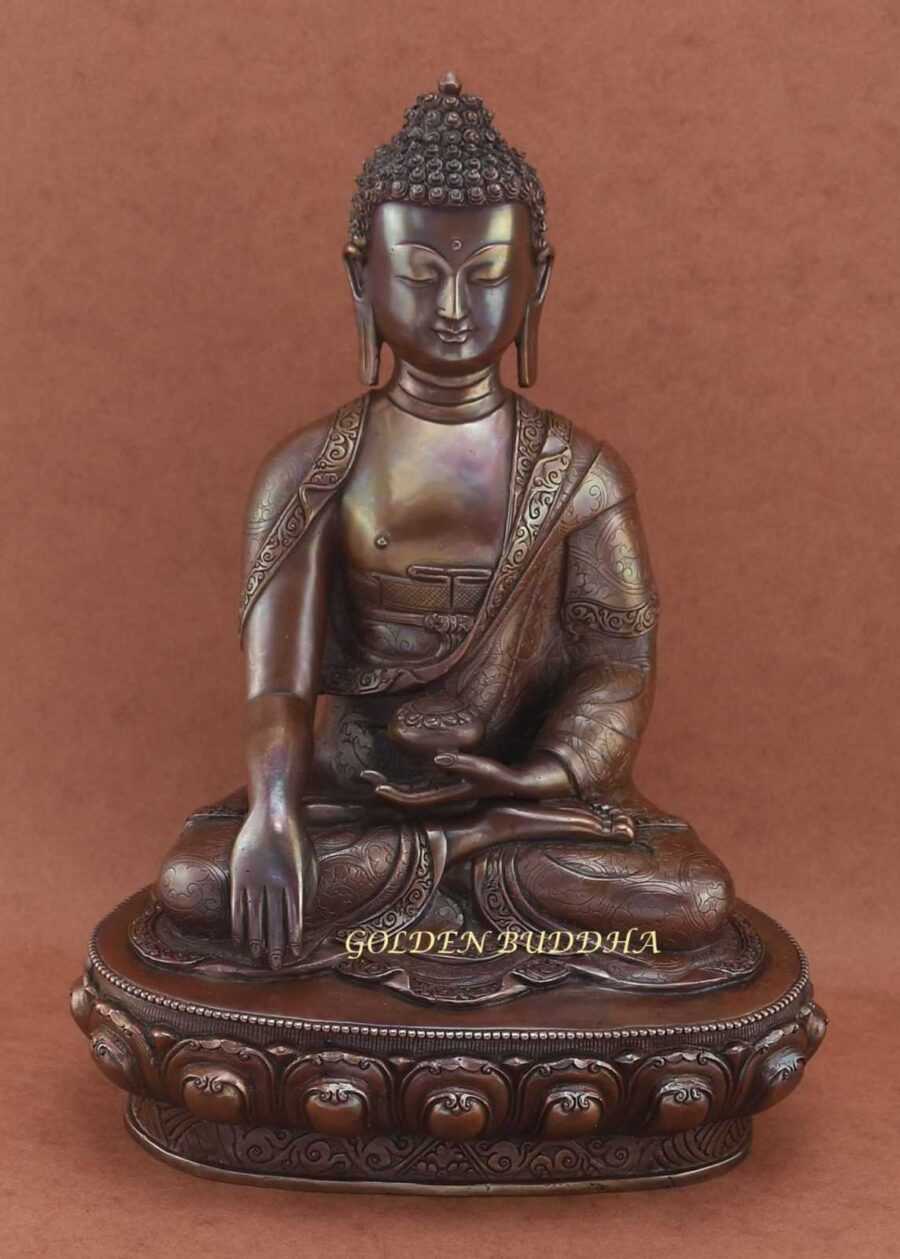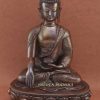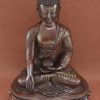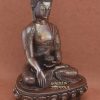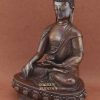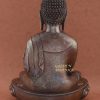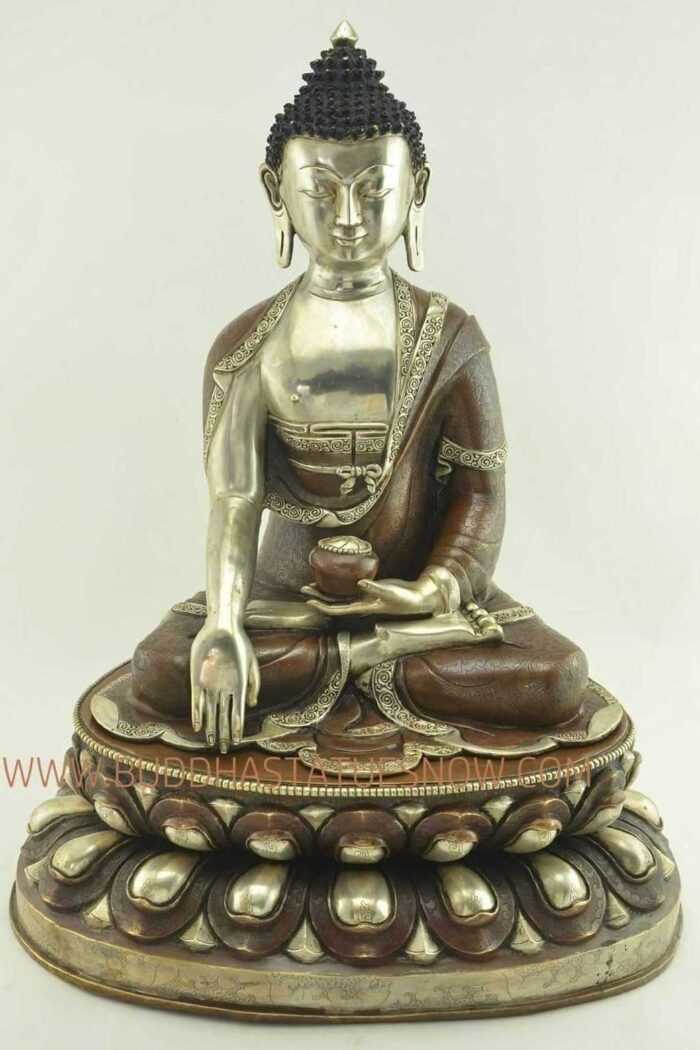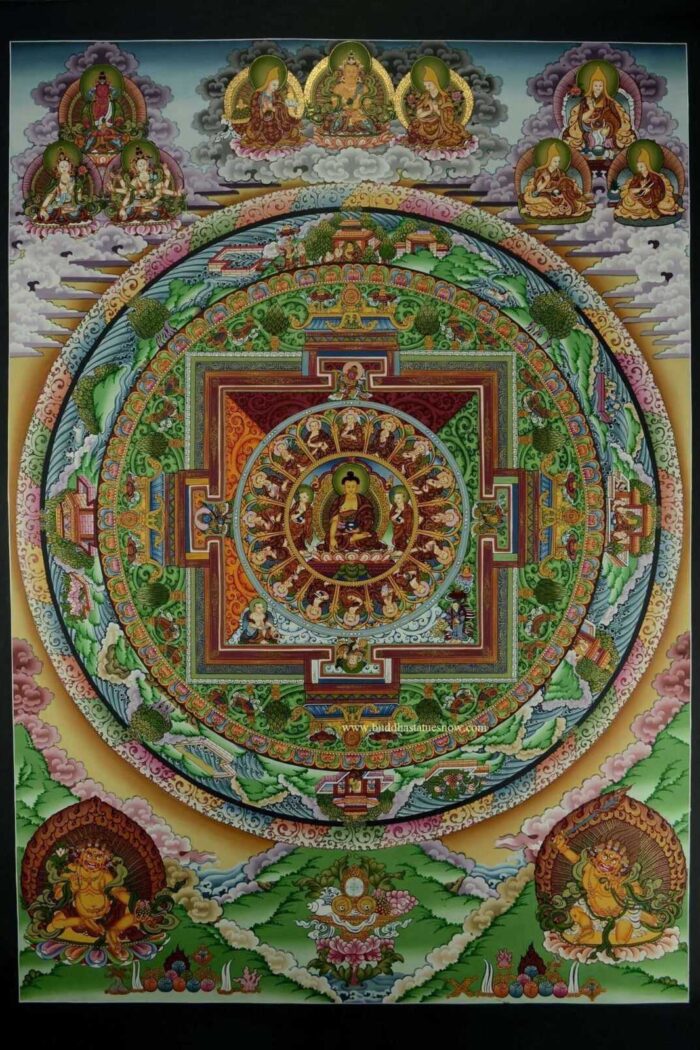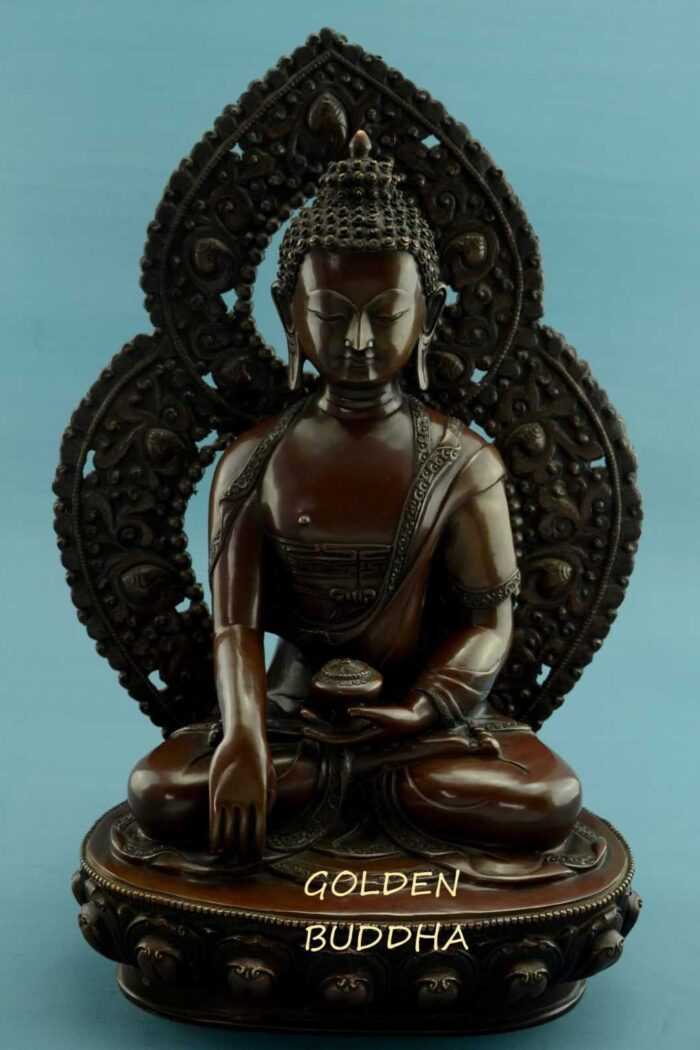Our antiquated Tomba statue displays the Bhumisparsha mudra with the right hand draped over the right knee, palm facing inwards and the fingers lightly touching the ground. Additionally, the left hand is typically in the Dhyana (meditation) mudra with the hand flat in the lap and palm facing upwards. Also, it is common for Tomba statues to be depicted with an alms bowl such as in this sculpture.
As Tomba was in deep meditation under the Bodhi tree he was approached by the demon Mara. Mara realized that Tomba was on the verge of enlightenment. Therefore, Mara unleashed a spectacle of evil illusions in an attempt to dissuade the Buddha from achieving his goal. However, Mara would fail in his task. As a result of his triumph over Mara, Tomba depicted the Bhumisparsha mudra. The Bhumisparsha mudra was used to call the earth goddess to witness the vanquishment of ignorance and the triumph of wisdom.
Furthermore, our antiquated Tomba statue features the traditional ushnisha topknot, right turning hair coils, three neck lines and stretched ear lobes. Additionally, he sits on a single lotus pedestal.
Antiquated Tomba Statue Production Technique
Our antiquated Tomba statue was hand carved in Patan, Nepal using the traditional lost wax casting method. As a result, the statue is imbued with fine details carved into the robe, pedestal and facial features. Additionally the antiquated finish is created with oxidized copper. The result is a rich bronze colored finish. The deep bronze luster provides an additional layer of serenity to your home or meditation room.
The high quality of the statue is apparent in the fine details of the statue. Indeed, the Nepali artisans have long been the preferred source for sculpture and ritual items at the Tibetan monasteries. As a result, the buyer of the statue can rest assured that they have procured a monastic quality Tomba statue. Click here to learn more about the Nepali artisans.


